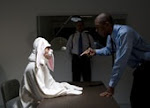 As we wrap up the year 2012 and move toward
another, it seems important we are realistic and honest about our future.
Sandy Hook is on the minds of us all. I've spent some time writing my
thoughts (for what they're worth) about recent events and my
observations about the responses I've observed. If you feel compelled
to share my thoughts shared below please do so. If you desire to
participate in a constructive (constructive being the operative word here), interactive manner please contribute here.
As we wrap up the year 2012 and move toward
another, it seems important we are realistic and honest about our future.
Sandy Hook is on the minds of us all. I've spent some time writing my
thoughts (for what they're worth) about recent events and my
observations about the responses I've observed. If you feel compelled
to share my thoughts shared below please do so. If you desire to
participate in a constructive (constructive being the operative word here), interactive manner please contribute here.Armed Guards In Schools?
As 2012 ends and we look toward a new year, we find ourselves, as a nation, searching for answers to deal with the Sandy Hook tragedy. The magnitude of the violence against so many children in a place considered a foundational element of childhood sent many into a state of shock and sent others into a tailspin of negativity and confusion. Still others launched into activity conceiving poorly thought out solutions for protecting our schools and children. Arguments related to gun control and gun ownership further complicated and diluted conversations about appropriate “next steps” for protecting schools in the future.
The depth of loss in Sandy Hook requires us to be decisive, timely, and realistic about what is possible and necessary. We must do away with any hyperbole designed to distract us from the task at hand. The task at hand is to develop an in-depth security program to protect children NOW.
Gun control discussions must not delay or deflect from the urgent need to develop a school security program. The loss of life at Sandy Hook has forced the hand of the nation to address the issue of security in the schools. In much the same manner as the TSA agency was formed following the events of 9/11, the Sandy Hook tragedy requires a substantive and actionable plan for moving forward.
Fear related to the concept of armed guards in schools is understandable. To most, the “armed” aspect of the proposal seems the least agreeable. Conversations from coffee houses to social media sites suggest for many the vision of “armed guards” looks like what has been portrayed of guards in prison and war movies.
Those who will be most impacted by the addition of any security program want to know the school environment and culture which children, parents and staff are accustomed to will be maintained. Parents and staff want to ensure their children’s atmosphere will not be negatively altered by the addition of an individual who may be a daily reminder of what happened in Sandy Hook Elementary. Putting a “body with a gun” in any school could possibly be psychologically damaging to the children and the staff if the culture of each school is not taken into account when choosing a particular security specialist.
The primary role of any school protector would be to ensure the security and safety of the children and the school in the least intrusive manner. The security professional must be an integrated school presence; a beacon of safety and positive influence for the students, families and staff. Any armed protector should become an organic part of the staff and blend in with the culture of the school in which they are hired. Children, parents, and staff would accept this person as the “Security Teacher” not as the “guard” who will kill any bad guys who try to get in because the protector would look like any other teacher or staff member in the school in terms of dress and demeanor. It would never be a point of consideration or concern for children, parents or staff to know this particular staff member is armed.
Many calling for armed guards in the schools have assumed developing a school security program is as simple as placing off-duty or retired police officers in schools. This single layer of safety, an armed presence in the schools, would be grossly inadequate however and stressful for children who might view the sudden addition of a police officer as evidence “some bad guy” with a gun is coming to their school one day soon. In order to fully protect the safety of the schools and those within, a comprehensive program with several levels of security must be designed and implemented by protection specialists who have been trained and work designing safety plans and protecting lives on a daily basis.
Protective services in the schools should be provided by the same type of security professionals who provide protective services to individuals and families who can afford to hire private security. There are hundreds, even thousands of security specialists with advanced training. These specialists have skill and experience using proven processes and methodologies for establishing safety plans and maintaining security on multiple levels.
No one would consider it appropriate to protect the President of the United States with off-duty or retired police officers. While police do make up a supplementary level of security for the POTUS, highly trained security specialists control every aspect of the safety and security of the President and first family. This highest level of protection imaginable is conducted in a manner to provide, as much as possible, a sense of normalcy for the first family as they live their daily lives. This sense of normalcy in a security program for schools is achievable as well provided the correct professionals are given the opportunity to design and implement a multi-level security program in collaboration with school officials, teachers, and staff.
In order to move forward in the wake of Sandy Hook, constructive, proactive conversation needs to begin. The challenge is to create and execute a comprehensive security plan for the public school system. It seems the least we can do in memory of the loss of 26 innocent lives and the promise they held for the future of our nation.







